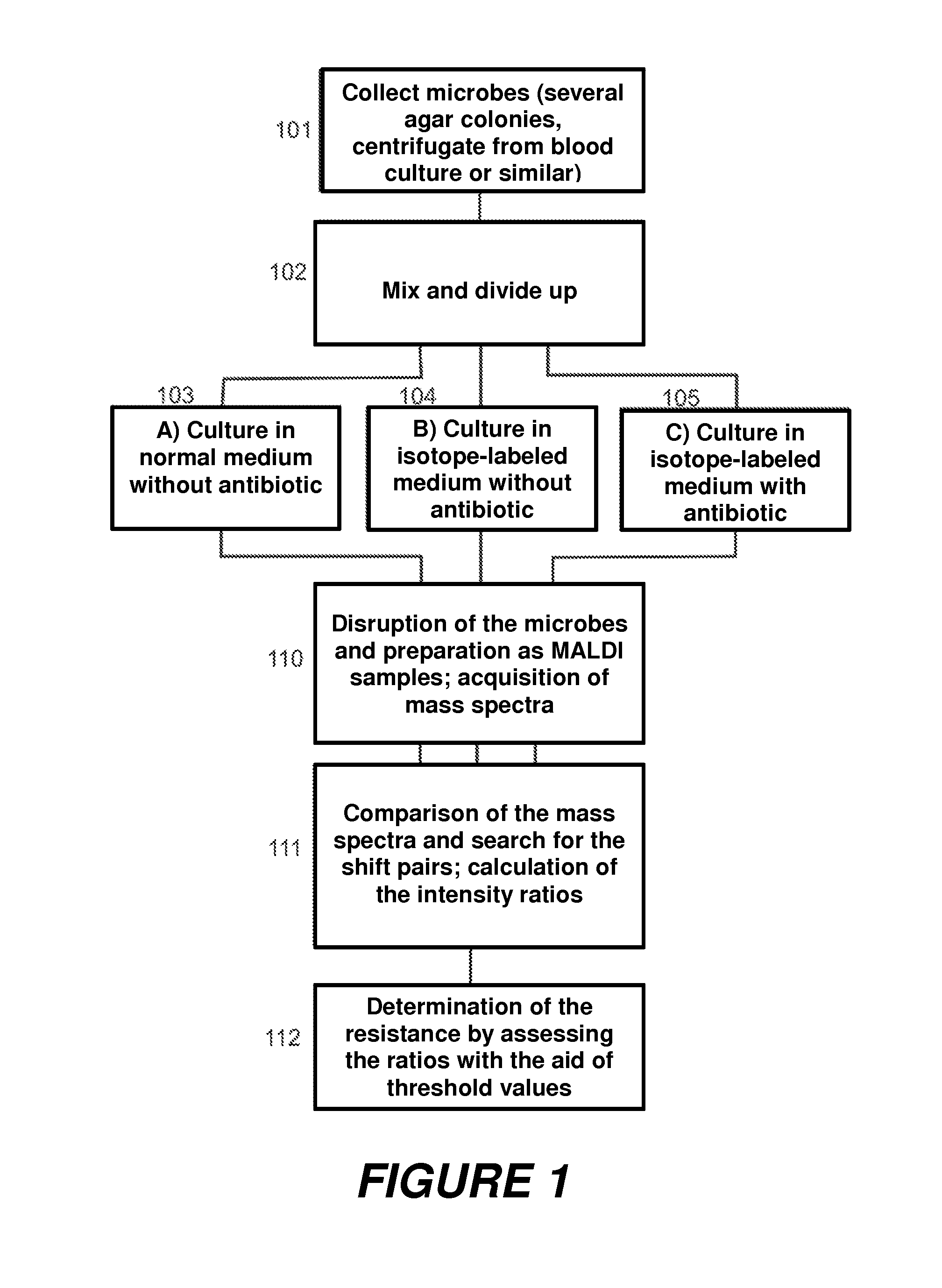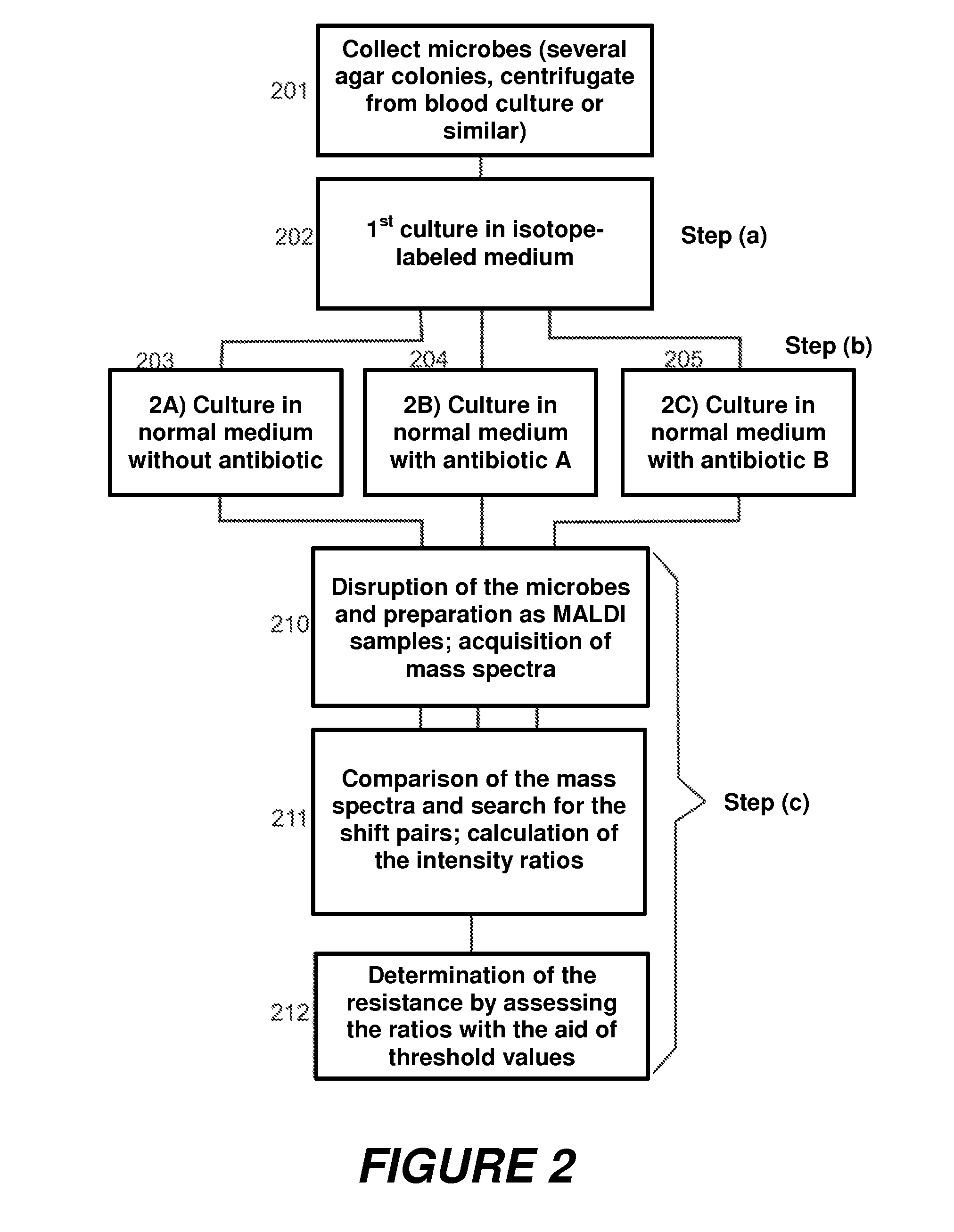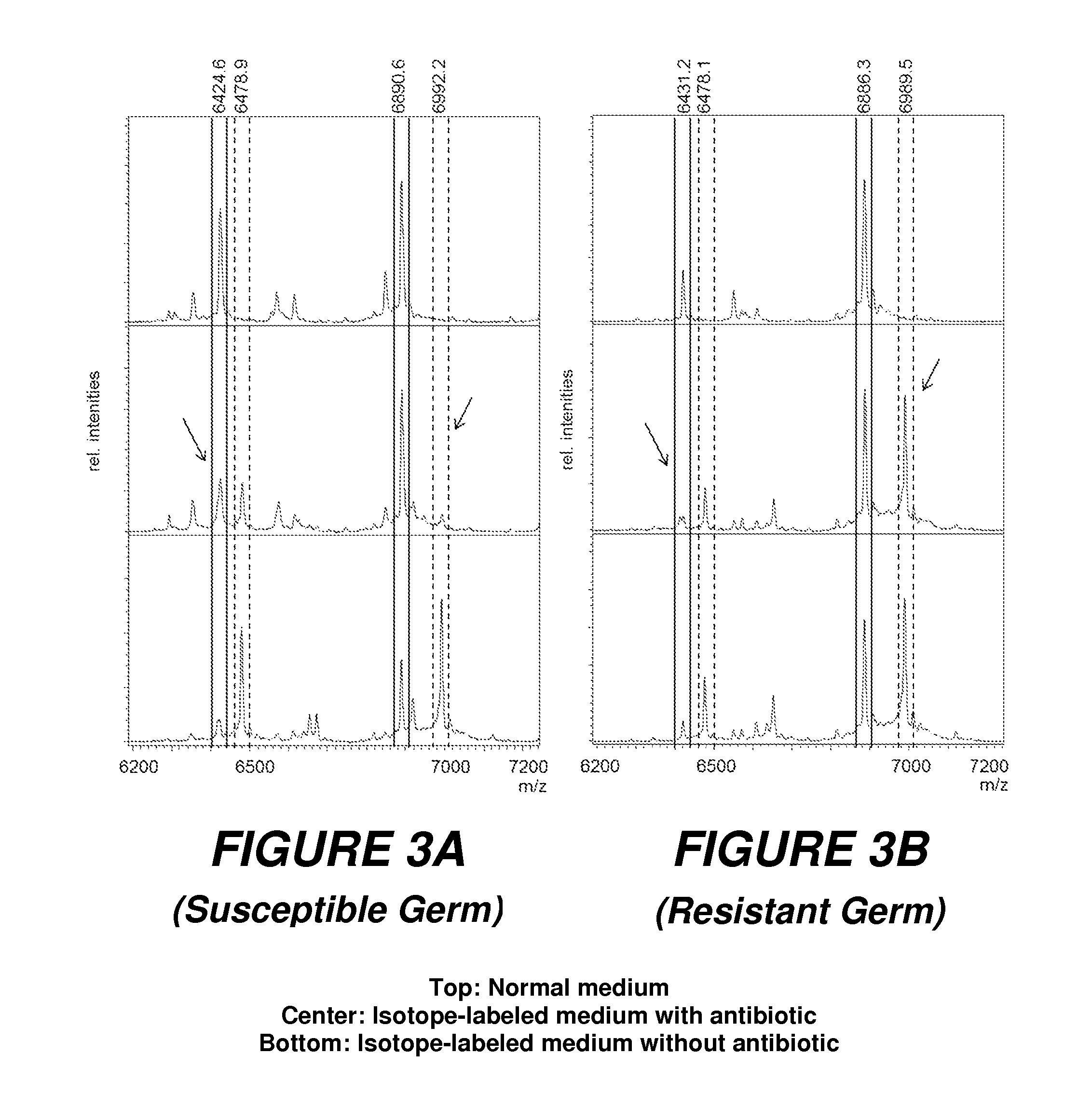Mass spectrometric determination of microbial resistances
a mass spectrometric and microbial technology, applied in the field of mass spectrometric determination of microbial resistance, can solve the problems of non-functional tests, more expensive than routine methods, and the inability to determine resistance directly from a mass spectrum, and achieve the effect of optimal growth conditions
- Summary
- Abstract
- Description
- Claims
- Application Information
AI Technical Summary
Benefits of technology
Problems solved by technology
Method used
Image
Examples
first embodiment
[0060]The type of evaluation to determine the resistances can be analogous to the evaluation used in the first embodiment; it must be noted, however, that the mass shift of the peaks is now toward lower masses.
second embodiment
[0061]The sequence of this second embodiment is shown in the diagram in FIG. 2. At first, microbes are again collected (201). These microbes are then cultivated, in a first step (a), in a first medium with several isotopically labeled amino acids (202) to a point where they now all contain practically only these amino acids in isotopically labeled form, and no longer in their unlabeled form. In step (b), the isotopically labeled microbes are now cultivated further in several normal media: in one medium without antibiotic (203), in further media with antibiotic A (204), antibiotic B (205), etc. In step (c), mass spectra of the microbes from the various cultures are acquired (210), the ratios of the intensities of the peak pairs are formed (211), and the resistance is determined by comparing the ratios with threshold values (212).
[0062]In both embodiments, the cultivation can be carried out in centrifuge tubes (for example Eppendorf tubes) or in filter plates (for example Acropep 96-w...
PUM
| Property | Measurement | Unit |
|---|---|---|
| concentration | aaaaa | aaaaa |
| mass | aaaaa | aaaaa |
| mass | aaaaa | aaaaa |
Abstract
Description
Claims
Application Information
 Login to View More
Login to View More - R&D
- Intellectual Property
- Life Sciences
- Materials
- Tech Scout
- Unparalleled Data Quality
- Higher Quality Content
- 60% Fewer Hallucinations
Browse by: Latest US Patents, China's latest patents, Technical Efficacy Thesaurus, Application Domain, Technology Topic, Popular Technical Reports.
© 2025 PatSnap. All rights reserved.Legal|Privacy policy|Modern Slavery Act Transparency Statement|Sitemap|About US| Contact US: help@patsnap.com



